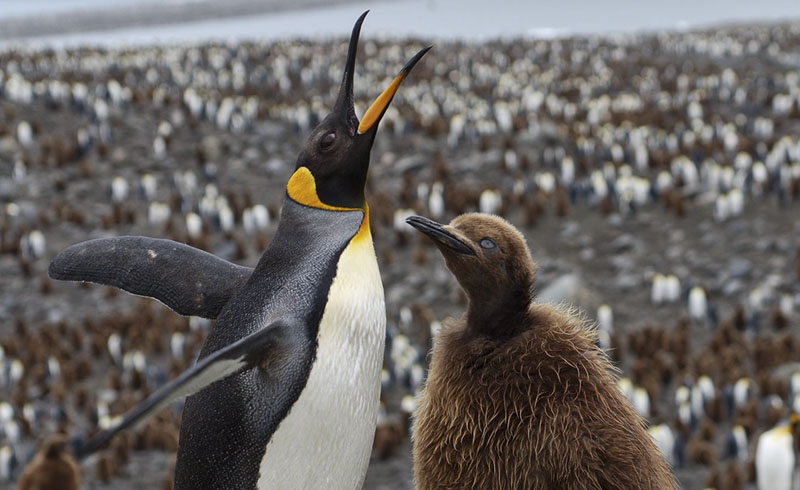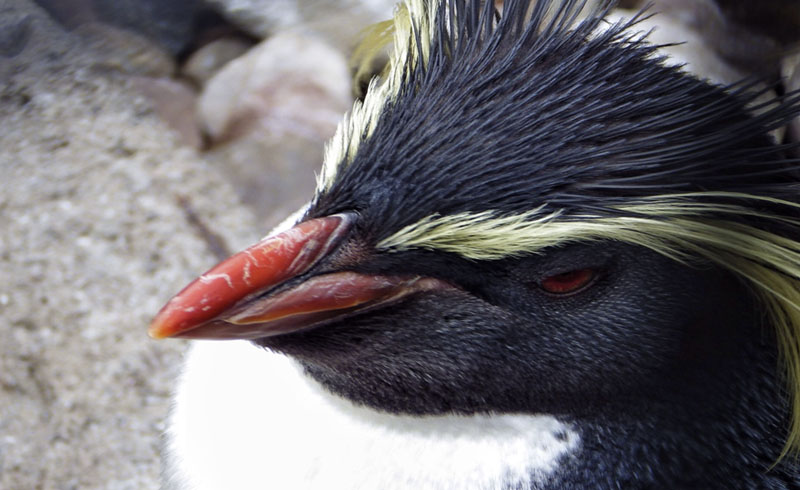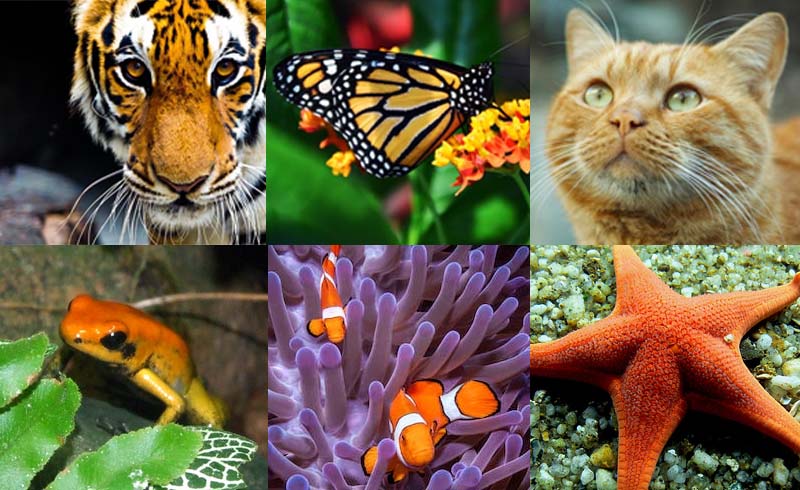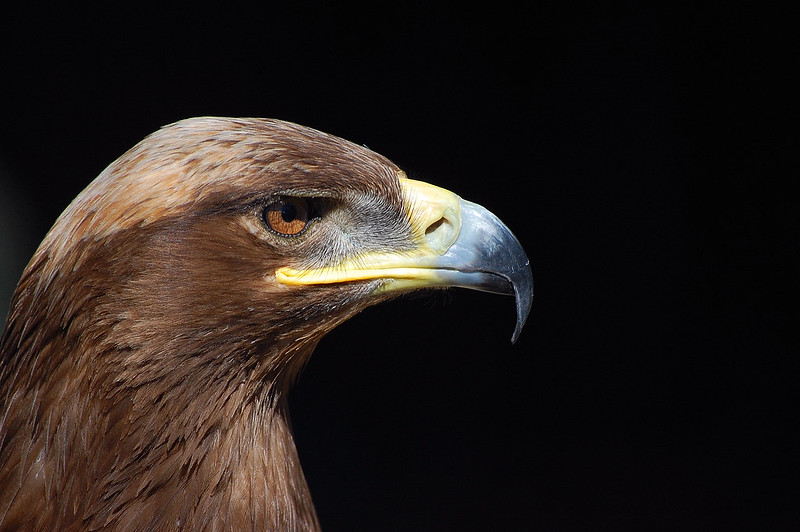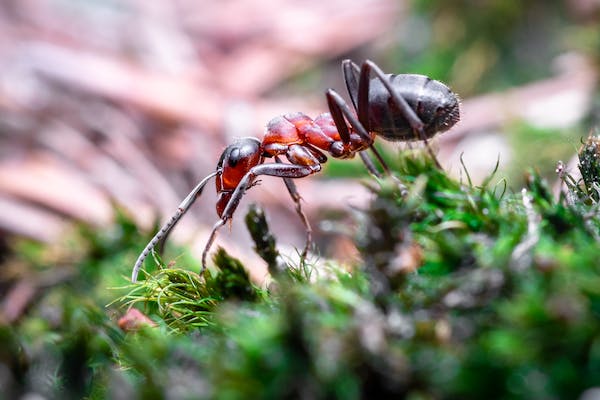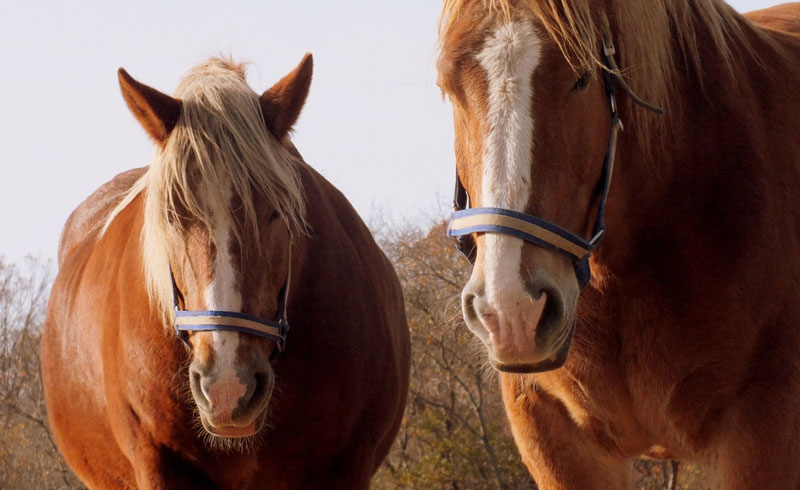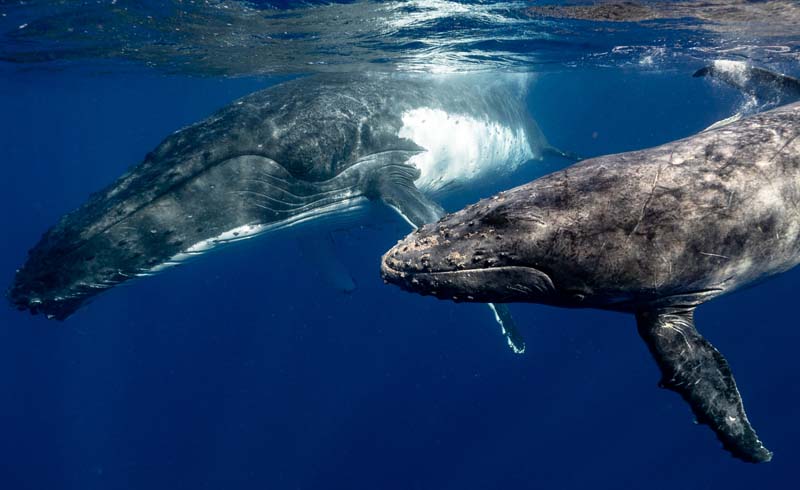- What are the Galapagos Penguins?
- Where do Galapagos Penguins live?
- Physical characteristics of the Galapagos Penguins
- What do Galapagos Penguins eat?
- How long do they live?
- Behavior and social customs
- The reproduction of the Galapagos Penguins
- The conservation status of the Galapagos Penguins
- Predators of the Galapagos Penguins
- Curiosities about the Galapagos Penguins
What are the Galapagos Penguins?
The Galapagos Penguins (scientific name Spheniscus Mendiculus) are flightless aquatic birds and belong to the Spheniscidae family.
They are named after the place where they live, which is the only place we can find them and that we will delve into in the next section.
They share many characteristics with most penguins, colors, walking, swimming ability... but they also have unique features.
Would you like to get to know them? Well, keep reading!
Where Do Galapagos Penguins Live?
The Galapagos penguins are a very special species, as they are the only penguins that live on the equator. These small penguins live in the Galapagos Islands (as you might have guessed), an archipelago located in the Pacific Ocean, near the coast of Ecuador.
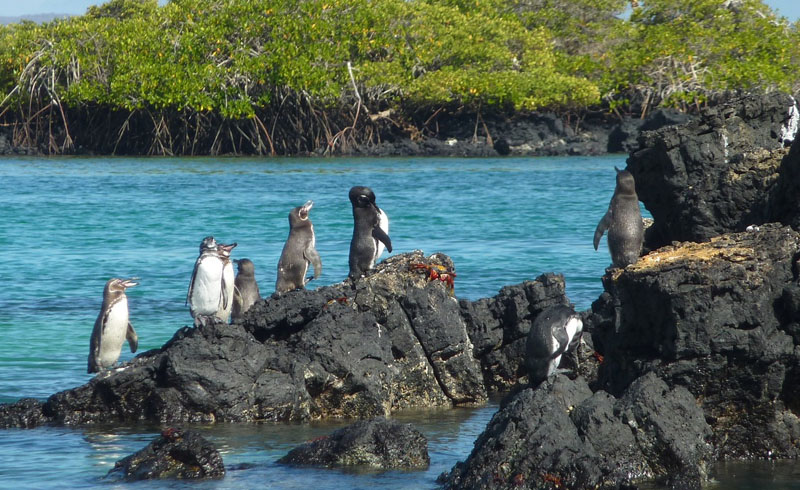
Life on the Galapagos Islands is very different from other places where penguins live. Instead of living in cold, snow-covered regions, these penguins live in a warm, tropical environment surrounded by sandy beaches and crystal-clear waters.
They are primarily found on the rocky coasts of the islands, where they gather in large colonies. There, they breed and feed together. They also spend a large part of their life in the water, swimming and searching for food.
It is a species at risk of extinction, but thanks to conservation efforts and the efforts of organizations to protect their habitat, their populations are increasing.
Physical Characteristics of the Galápagos Penguins
The Galapagos penguins have unique physical characteristics due to their tropical environment. Some of their most notable characteristics include:
Size
Male and female Galápagos penguins are approximately the same size, measuring around 50 cm (20 inches) in height. However, there may be slight variations in size due to individual factors. Males may be slightly larger than females, but the difference in size is not significant.
Weight
The average weight of Galápagos penguins is around 1.5 kg (3.3 lbs). However, just like their size, weight can also vary slightly depending on the individual's sex and age. Males tend to be slightly heavier than females. Young penguins may also weigh less than mature adults.
Skin and Plumage
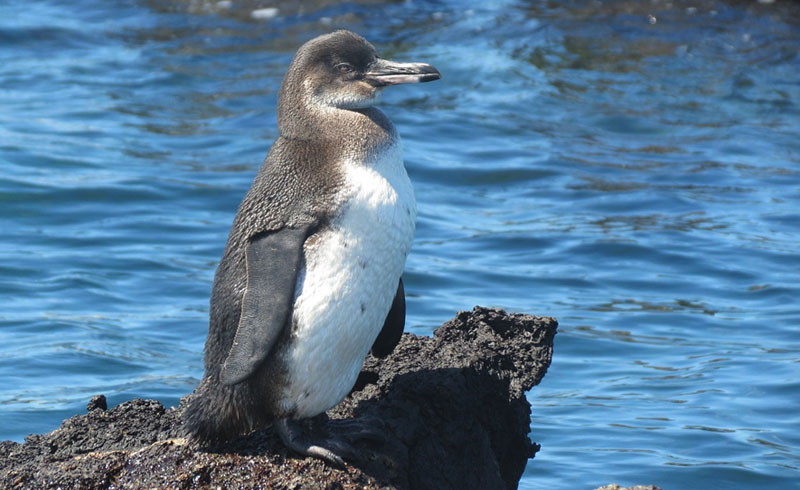
The plumage of Galapagos penguins is very special and is one of the most notable features of this species. The plumage is black on the upper body, with a white band around the neck and a white spot on the top of the head. The lower body is white. The contrast between black and white is very striking and helps these penguins to blend in with the water.
The plumage is very important for Galapagos penguins as it helps them stay cool in the warm and tropical environment in which they live. Black is a color that absorbs heat and white is a color that reflects heat, therefore, it helps regulate the body temperature. In addition, their plumage is water-resistant, allowing them to swim easily in the ocean.
Unlike other penguins, they don't have a layer of fat under their skin to protect them from the cold, instead, they have a layer of scales to protect them from the sun.
Flippers
The flippers of these penguins help them swim quickly in the ocean. They are elongated and narrow, allowing them to easily glide through water.
Imagine speed skates for water, that's what their flippers are, they allow them to move with agility and speed in the water. It's very important for them since they feed mainly on fish and crustaceans found in the ocean.
Also, the flippers help them maintain balance while moving on rocks and walking on the coast. They are designed to be very strong and resilient, allowing them to withstand constant use and water impact.
Legs and Feet

These birds' feet help them walk on rocks and swim in the ocean. They are short and strong, with webbed toes that allow them to grip and hold rocks as they walk.
Imagine hiking shoes for rocks, that's what their feet are, they are designed to keep them stable while moving on rocks. The toes are connected by a membrane that helps them maintain balance and avoid slips.
In addition, the toes are also adapted to help them swim. They are covered in scales to protect them from the sun and salt water, allowing them to swim easily in the ocean.
Beak
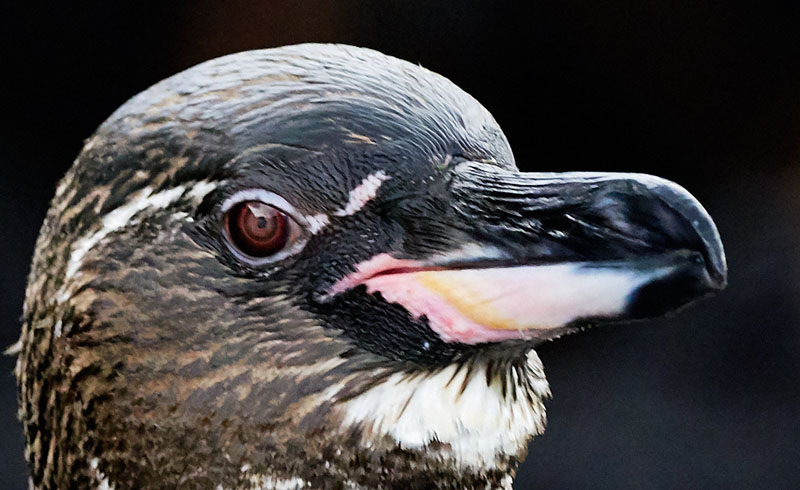
Their beak is short and pointed, with a scissor-like shape which helps them catch small fish and crustaceans. They are designed to cut and crush the food they find in the ocean.
Their beaks are their best tool, they are strong and precise and allow them to catch even the smallest food.
In addition, the beaks also help them communicate with each other. Galapagos penguins use their beaks to express different emotions and to attract their mates during the breeding season.
What do the Galapagos Penguins Eat?
These birds are true underwater hunting experts. Their main diet consists of fish such as sardines, anchovies, and sardines, crustaceans such as shrimp and crabs, and algae and plankton.
That's right, you read that correctly!
These penguins are omnivores, they don't just eat fish, they also consume algae and plankton, which allows them to have a varied diet and adapt to the availability of food in their habitat!
These birds are true underwater predators and can swim at incredible speeds to catch their food. They're also capable of searching for food on the seabed, where they find algae and plankton.
Life Span of Galapagos Penguins
Galapagos penguins typically live between 8 and 15 years in the wild. However, their lifespan can be impacted by factors such as illegal fishing, pollution, and climate change, which can reduce their life expectancy.
In addition, natural predators such as hawks and sharks can also pose a threat to the survival of young penguins.
Behavior and Social Customs
Galapagos penguins have very interesting and unique social customs due to their tropical environment. Here are some of these customs in an entertaining way:
- Living in colonies: Galapagos penguins live in large colonies on the rocky coasts of the islands. These colonies can contain thousands of individuals and it is a way to protect themselves from predators and to find mates.
- Walking together: These penguins are very social and often seen walking together on the coast. They walk in single file to save energy and to protect themselves from the sun.
- Vocal Communication: Galapagos penguins use a variety of sounds to communicate with each other, including honks, screeches, and songs. They use these sounds to express different emotions and to attract mates during mating season.
- Protecting their eggs: During mating season, both males and females share the task of protecting their eggs and caring for their chicks. Males typically guard the eggs while the females go to forage for food.
- Food sharing: Galapagos penguins are very cooperative with each other, and it is common to see them sharing food with other colony members who are in need.
The reproduction of Galapagos penguins
Unlike other penguins that breed in winter, Galapagos penguins breed year-round, with a peak during the rainy season when food is more abundant.
Galapagos penguins form pairs during the breeding season and are very loyal to each other. Both partners contribute to building the nest using stones and any other nearby material. Once the nest is built, the female lays a single egg, which is incubated by both partners.
The incubation time is approximately 39 days, and once the chick hatches, both parents take turns feeding and caring for it. The chick stays with its parents for about 70 days before leaving the nest and joining the colony.
It's important to note that this species of penguin is considered endangered due to habitat loss and fishing for their food, which is the main threat to their survival. Additionally, climate variations and climate change can also affect their reproduction and ability to survive in their unique environment.
However, there are efforts underway to protect and conserve this endangered species, including protecting their habitats and regulating fishing in the Galapagos Islands.
Despite being considered an endangered species, Galapagos penguins have a relatively high rate of reproduction and can have multiple chicks in one season.
Conservation Status of Galapagos Penguins
Did you know that Galapagos Penguins are critically endangered?
Yes, it's true! Illegal fishing, pollution, and climate change have caused a decrease in their population. According to a recent study by the Ecuadorian Government, it is estimated that only around 1,000 to 5,000 individuals remain in the Galapagos.
To make matters worse, Galapagos Penguins are endemic to the region, meaning they are not found anywhere else in the world. If we lose these animals, there will be no way to recover them.
But there is still hope. Environmental organizations and scientists are working together to protect the Galapagos penguins and their habitat. This includes implementing policies to regulate fishing, removing pollution, and preserving the region's native flora and fauna.
In addition, efforts are also being made to increase the penguin population through captive breeding programs.
It is important for us all to do our part to protect these unique animals. If you visit the Galapagos, make sure to follow conservation rules and avoid any activities that could harm the penguin's habitat.
Let's act now before it's too late! The Galapagos penguins deserve to continue swimming in their crystal clear waters and living in their beautiful natural home.
Predators
Galapagos penguins have some natural predators that can threaten their survival. However, thanks to their swimming and walking abilities, they are able to avoid many of these predators.
Some of the most common predators include:
- Sharks: Although Galapagos penguins are excellent swimmers, sharks can be a threat in the ocean. However, penguins are able to detect the presence of sharks and avoid them.
- Raptor birds: Birds such as frigatebirds, boobies and hawks can be predators of penguin chicks. However, adults are able to defend their chicks, keeping them safe in the nest or in the colony.
- Gulls: Some species of gulls can also be predators of penguin chicks. However, adults usually keep the chicks under their protection and teach them to avoid these birds.
- Humans: Human activity, such as fishing, building infrastructure near penguin habitats, and water pollution, can be a threat to the survival of Galapagos penguins.
In summary, Galapagos penguins have some natural predators such as sharks, raptor birds and gulls, but thanks to their swimming and walking abilities, they are able to avoid many of them. However, human activity can be a significant threat to their survival.
Galapagos Penguin curiosities
- Galapagos penguins are capable of enduring extremely high temperatures, up to 40 degrees Celsius, due to their adaptation to the tropical climate.
- Galapagos penguins are known for being excellent swimmers and can reach speeds of up to 15 kilometers per hour in the water.
- Galapagos penguins do not have an annual molt of feathers, instead they continuously lose and renew their feathers.

